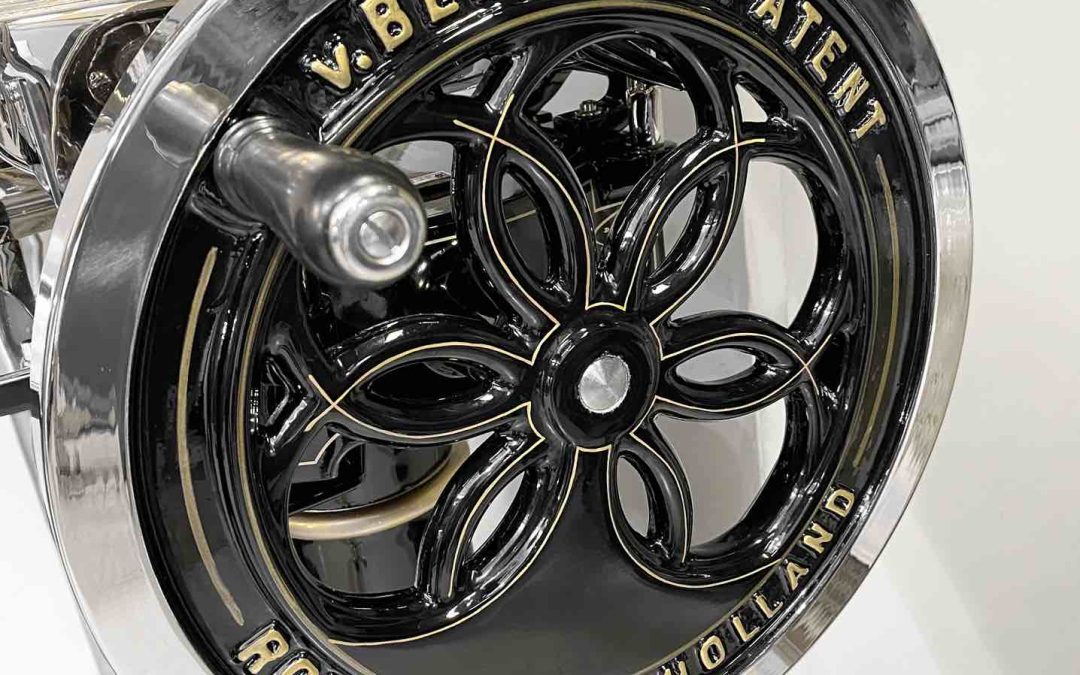What is Functional Art?
What is Functional Art? Thinking about a work of art makes us imagine a painting, a sculpture, or to some of us, it may remind us of contemporary composition, a poster, or an object.
And again, admiring a work of art means observing it, studying it, and in some cases touching it or listening to it.
But only a few would think of using a work of art in their daily life and making their home a functional art gallery.
What is Functional Art, the rediscovery of art in everyday life
Functional art is more than a movement or a trend, it is a rediscovery of the relationship between man and art, a total change in the artistic experience.
The fundamental shift starts with the revolution in the concept of artistic creation from wanting to represent something to wanting to be part of people’s lives.
As a result, some artists and designers create functional objects that are part of everyday life with artistic intent, resulting in creations that make home environments unique, such as household appliances, furnishings, or accessories.
Functional art is part of the rediscovery of a new model of everyday life, linked to well-being, slowness, and the fascination with beauty.
It is the rediscovery of grinding coffee beans by hand or slicing cold meats with a Berkel flywheel slicer, the beauty of creating new forms and new spaces to welcome guests.
Experiencing art directly to change and elevate one’s daily life, integrating unique and exclusive objects that reflect one’s own style and philosophy.
Functional art is the rediscovery of the beauty of normality, it is a continuous search for objects that can remind you of situations or journeys you have experienced.
It can be considered the postcard of the 21st century, a rediscovery of the Italian ‘dolce vita’ or oriental philosophy in one’s home and everyday life.
Functional Art, furnishing to be happy
The environment in which one lives is fundamental to being happy.
Functional art was born precisely with the aim of combining artistic intent and quality with functionality and utility.
The objects that characterize functional art, for example, are made of special materials, create plays of light, or totally change the way of doing certain domestic activities and create new spaces or even change the way of spending time.
For example, some highly crafted ceramic tea sets lead one to discover the art of the tea ceremony, instead of a quick snack.
Choosing and carefully researching the objects that will be part of your life is part of your happiness itself.
Rediscovering the pleasure of small daily activities through works of art is a unique experience, bringing back memories of the past that arouse emotions of well-being and familiarity.
Functional Art Examples
Some typical kitchen objects, such as chopping boards or trays, become works of art in wood, ceramic, marble, or resin that become integral parts of dishes to be served to guests or family.


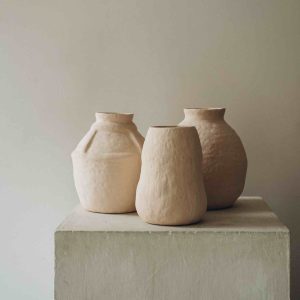
Vases and tea sets in ceramics or porcelain can change the way you spend your time, devoting care and attention to the moment of preparation and tasting.
Stone mortars or manual coffee grinders lead to the rediscovery of manual skills and nature in culinary and other preparations, without the use of electrical appliances.

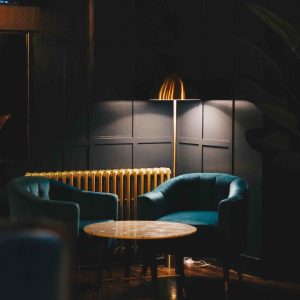

Clocks, especially mechanical ones, become icons of style, sometimes with the movement ‘naked’ so that one can admire their gears and wheels.
A sofa itself can be rethought, without a backrest and fixed armrests it becomes modular and organizable in multiple ways, creating new spaces and new ways of communicating.
Kitchen or bathroom furniture uses natural materials and innovative geometric shapes, changing the traditional idea of furniture. In addition to aesthetics, it is important to consider the functional aspect of the furniture, which is designed to meet everyday needs.
Lighting becomes an integral part of the furniture, experimenting with new techniques in glass or crystal, combined with earthy elements such as stone or wood materials to create unexpected plays of light.
When a slicer becomes a work of art
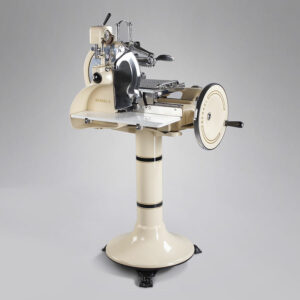
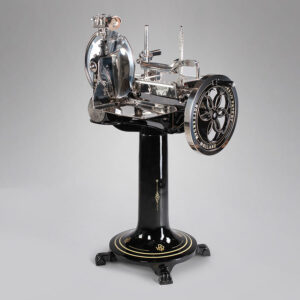
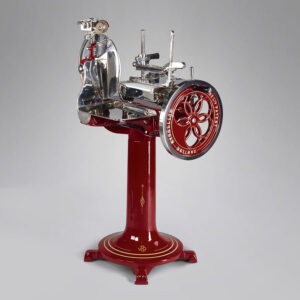
The myth of the Berkel slicing machine has deep historical roots when inventor Wilhelmus van Berkel revolutionized the way meat and sausage products were sliced by creating the first flywheel slicer in history.
The invention was made possible by combining Van Berkel’s mechanical skills and expertise with his experience as a butcher and responding exactly to the needs of his customers.
It was carefully thought out down to the smallest detail, from the iconic red color to the lettering to the flywheel, but above all, the Berkel flywheel slicer had a unique and harmonious movement.
Berkel’s design and aesthetics features, combined with the extraordinary mechanical innovations that enabled it to surpass knives, created one of the first examples of Functional Art in history.
Today, these slicers are hard to find in good conditions. At Original Slicers we’ve been collecting these wonders of engineering from around the world since the 1990’s. We have created an exclusive restoration process that brings these machines back to their original beauty and performance, therefore we offer fully operational authentic restored Van Berkel meat slicers.

